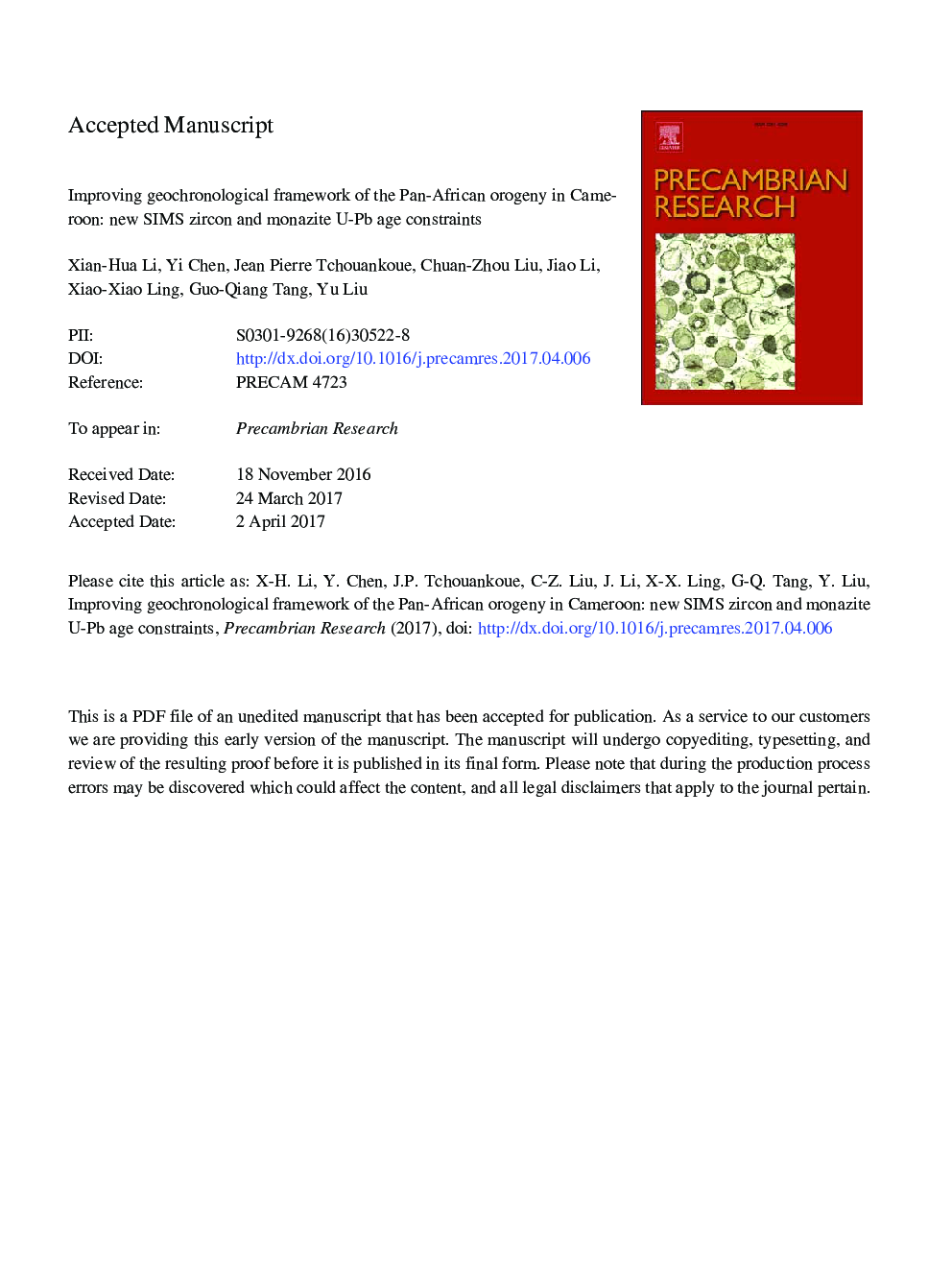| Article ID | Journal | Published Year | Pages | File Type |
|---|---|---|---|---|
| 5784856 | Precambrian Research | 2017 | 81 Pages |
Abstract
High-precision geochronological framework is crucial to understanding of the evolution of orogenesis. As part of the Pan-African North Equatorial Fold Belt, the Neoproterozoic Fold Belt of Cameroon (NFBC) involved polyphase deformation (D1 to D4 phases), metamorphism (up to granulite facies) and widespread crustal anatexis and magmatism. While a general geochronological framework has been established, controversy still exists on the temporal evolution of the metamorphic and magmatic events associated with polyphase deformation, in particular, the accurate age and geodynamic manifestations underlining the end of the orogeny are yet to be well constrained. We conduct in this work integrated analyses of SIMS U-Pb zircon and monazite dating and in-situ zircon Hf-O isotopes on the orthogneiss, leucosome and granite samples from Wum and Yaoundé of southwestern Cameroon in order to provide further constraints on temporal evolution of the NFBC. Our high-precision SIMS U-Pb age data demonstrate that the magmatic protoliths of orthogneisses from Wum and Yaoundé were emplaced synchronously at ca. 620 Ma. They were generated by partial melting of the thickened Paleoproterozoic crustal basement rocks with zircon Hf TDMc model age of ca. 1.9-2.0 Ga. Metamorphic zircons and two generations of monazites from an in-situ leucosome within the granulitic paragneiss of the Yaoundé Group yield indistinguishable ages of ca. 610 Ma. These new results, in combination with previous isotopic data, suggest that the Yaoundé Group supracrustal rocks with zircon Hf TDMc model age of ca. 1.7 Ga experienced a very rapid evolution from sedimentation at <626 Ma, burial to deformation and granulite facies metamorphism at ca. 610 Ma. The deformed two-mica granite and undeformed biotite granite in Wum were precisely dated at 561 ± 3 Ma and 557 ± 4 Ma, respectively. They both were derived from similar supracrustal sources with zircon Hf TDMc model age of ca. 2.56-2.40 Ga. On the basis of our new SIMS U-Pb ages, along with existing dates from the literature, an improved geochronological framework is proposed for the NFBC, with ages of â¥620 Ma, ca. 620-600 Ma, ca. 590-580 Ma, and ca. 580-560 Ma for the D1, D2, D3, and D4 phase events, respectively.
Related Topics
Physical Sciences and Engineering
Earth and Planetary Sciences
Geochemistry and Petrology
Authors
Xian-Hua Li, Yi Chen, Jean Pierre Tchouankoue, Chuan-Zhou Liu, Jiao Li, Xiao-Xiao Ling, Guo-Qiang Tang, Yu Liu,
